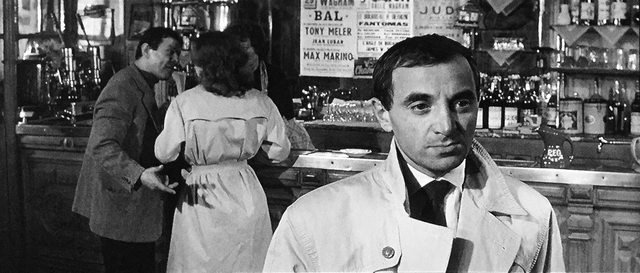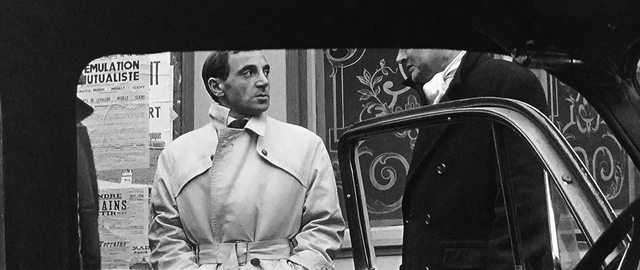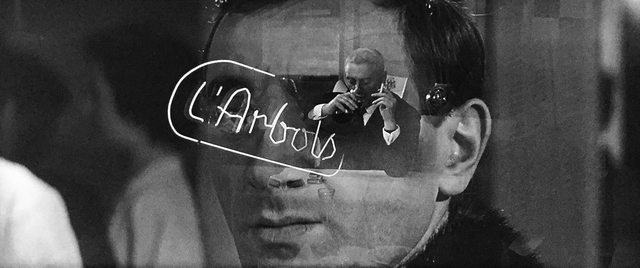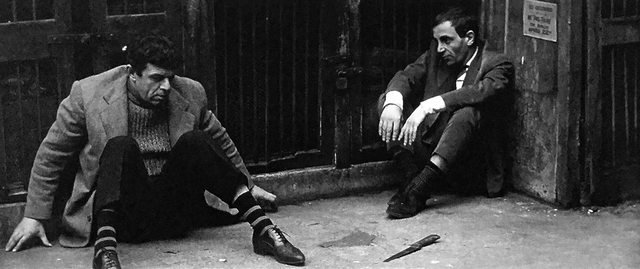By 1960´s standards this is another groundbreaking movie in the so-called "french new wave". Usually i try not to refer too much to established "categories" and trends, new or old. But sometimes, there seems no way out of discussing this angle, since so much have happend since then, that we have become accustomed to so that we are having a hard time appreciating movies from, what i call the second artistic wave (the first one being in the 20´s). Much new ground was discovered and rediscovered in the late 50´s and 60´s so this is also a film history review, as well as a review. This is Truffaut´s second movie. The difficult second, after his huge succes with "The 400 blows".

Charlie (Charles Aznavour) works day in and day out as a pianist in a Parisian honky tonk with a slightly paranoid owner. He is approached by his criminal brother, who is chased by some gangsters that he has cheated after a robbery and Charlie gets reluctantly caught up in his brother´s situation. Later he follows the waitress Lena home. She is secretly in love with Charlie, but is reluctant to show it. The next day, after the two gangsters unsuccessfully tries to kidnap them both, they end up back at Charlies apartment. He is now kicked very much out of his numb lifestyle and Lena makes him tell the history, he is trying to forget. He was a famous pianist. But his former wife´s suicide, led him to stop playing concert halls and sent him on slope down depression. Lena extends her love of his virtues and begs him to forget the bar, and start practicing for serious concerts again. Together they give in their resignations but the owner gets mad and the situation escalates until Charlie is forced to stab him to death to avoid being strangled. They flee to his brothers hut in the country but the gangsters are still after them and now also have kidnapped Charlies younger brother. The shootout that follows has fatal consequences.

Truffaut was very much aware of the public's eye on his second effort and any expectations to what he might deal with. He intelligently chose to base it on a novel, to remove his own ego from the plot and focus on making scenes and compositions that satisfied him. The situations in his movies are often based on personal experiences i am sure. Take the scene where kids throw paint on the front window of the gangsters car. That is a strange decision to add and i am sure it is a recreation from an experience from his youth. The characters, notably Charlie, has been changed from the novel, towards a shy personality instead of the confident type. That seems to be a wise decision in this sort of noir, new wave pastiche over american movies of the 50s but also because it will fit Aznavours personality, and maybe limited acting talent, better. Now to be honest, i do not care much about the plot and the story of the Charlie character is not that interesting either. What interests me is the bold new ways of filming certain scenes in close to natural light or even missing lighgt. I like the surprising close up shots, like the one of his finger slowly moving towards the door bell, but stopping an inch before. There is a long superimposed shot during a kiss that is a nudge back at the artistic silents of the 20s. There is even a scene with a woman exposing her bare breasts before going to bed as if it was the most natural thing. There are many such small surprises that pop up every now and then and to me that is the main interest of this film. I enjoy older street-photography of for instance Cartier-Bresson and the black and white composition of Truffaut has the same need for extreme artistic freedom, while still adhering to conventional composition rules, like the golden ratio. I see the films plot and story as a deliberate excuse for using it as a playing field for trying out new artistic ideas and circumventing the pressure of the prejudiced critiques.

For a new wave or Truffaut fan there is no way around this movie, but primarily for the artistic ideas and not so much for the story. I try to imagine what it would be like to a film fan and go to the cinema in 1960 and watch this. It must have felt like a giant step finally towards artistic freedom of expression and a celebration of both low budget cinema and everyday life of everyday people as equally interesting stories for showing in a film.

Rating: 7/10
